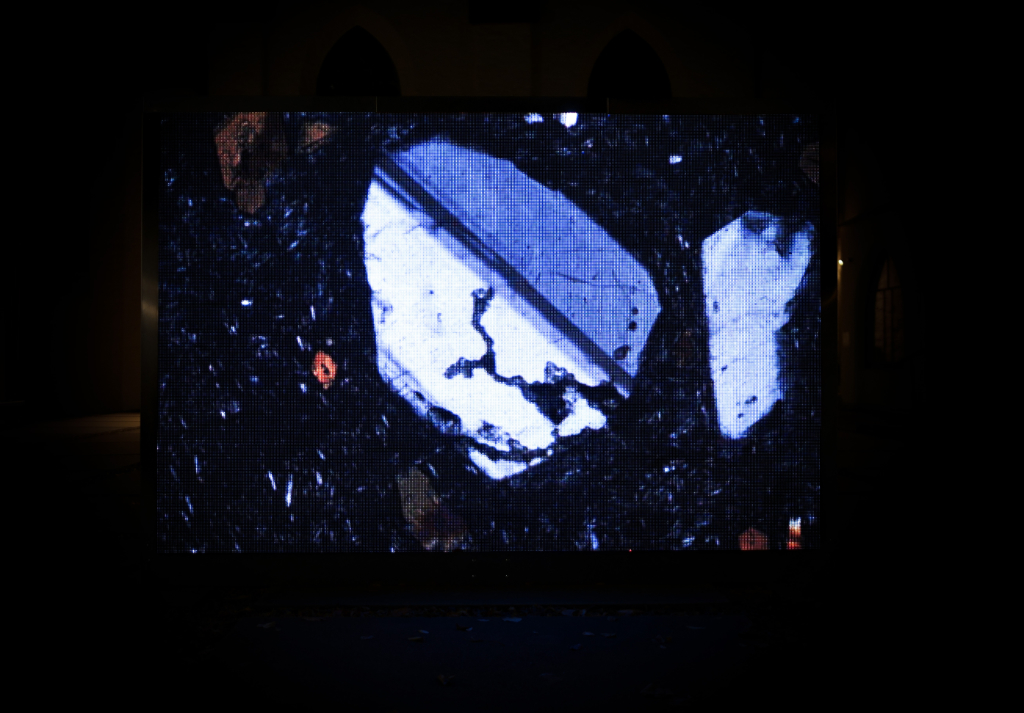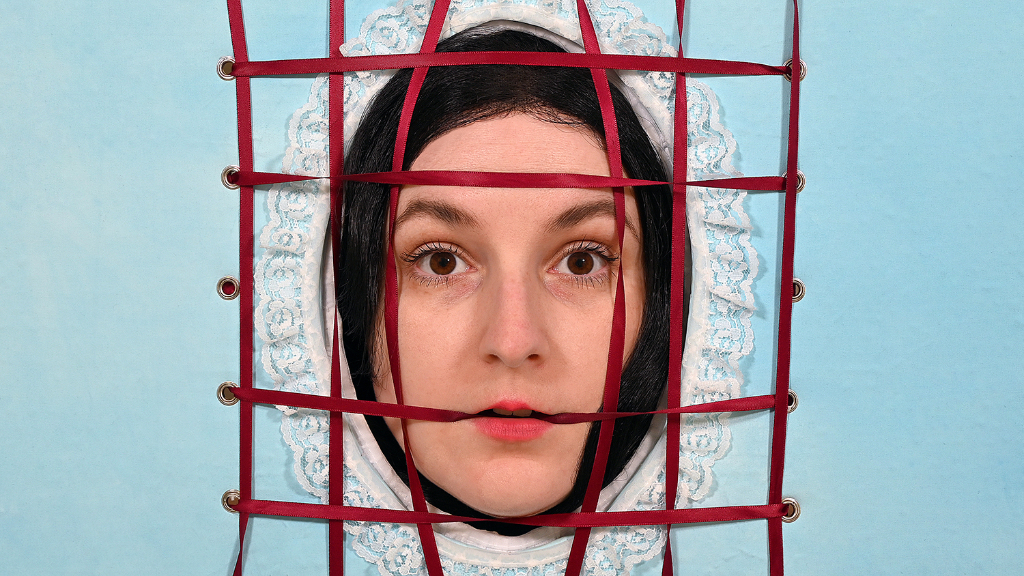Text by Ana Prendes

In The Phenomenon of Life, philosopher Hans Jonas described the idea of a living organism as an individual body that asserts an independence of identity from the matter that constitutes it, while actively depending on it and its environment. Living is constantly haunted by the possibility of ceasing to be, of death; as Jonas remarked, ‘life is at the mercy of its own performance.’
Mexican artist Felipe Osornio, known as Lechedevirgen Trimegisto, embeds their chronically ill person’s experience in their performative practice, using his body to interpret the ‘performance’ of living with extraordinary sensitivity to physical body diseases and death processes. For over ten years, Osornio suffered from a chronic kidney condition, developing his practice as a healing space for understanding their transformations of the biological self.
As Osornio describes it, they were ‘reborn’ in 2017 after getting a kidney transplant from his mother. Since then, the artist has explored the physical and mental consequences of organ transplants, as well as the political and socio-cultural dimensions of organ donation in his home country. By the end of 2020, more than 23 thousand people were waiting for organ or tissue transplantation in Mexico. However, mistrust of the healthcare system, religious falsehoods about donation and perceptions of inequity in the distribution of organs are major barriers that cause a donation rate of only 2.2 donors per million people in the country.
In the cat-walk performance Organolepsia, four models showcased several pieces in the shape of shiny lungs, hearts and livers as if they were luxury accessories, evoking their large donation demand and inaccessibility in the country. The performance evolves into a fictional auction where the audience can volunteer to sell their organs. The raised money functioned as symbolic figures to contrast the exorbitant transactions paid in the human organ black market and was donated to low-income patients undergoing a kidney transplant in the General Hospital of Querétaro in Mexico.




In his last work, EXPLANTE, the artist moves his flesh from the centre of the piece, taking his personal experience ‘out’ of his body to bring about life. Starting from his explorations in in-vitro tissue reproduction, the project takes its name from micropropagation biotechnological techniques. In these processes, plant tissue is extracted from a mother plant and grown under laboratory conditions to produce ‘explants’ – genetically identical organisms.
Working closely with biologists and herbarium technicians at the Autonomous University of Querétaro, they developed an in-vitro culture process for a parsley plant, creating multiple viable explants. Parsley has been historically used to treat multiple diseases. Particularly, its medicinal and healing properties for kidney problems defined the artist’s plant choice for the project. ‘We created multiple explants from a parsley plant due to its medicinal and curative properties at a nephrological level to juxtapose medical-scientific and technological knowledge with the knowledge of traditional medicine and herbalism.’
Once grown, the artist transplanted the explants into their corresponding transplanters. Inspired by organ manufacturing, these transplanters are 3D-printed kidney-shaped containers created through digital modelling based on the transplanted organ’s ultrasound and magnetic resonance images.
When I decided to start EXPLANTE, I was convinced that my kidney and I were in the right place to collaborate on this artistic level. Through this creative process, I got the opportunity to see and examine my kidney so close that I think I got to understand even better the whole process of having another organ as part of me.
Lechedevirgen ‘cloned’ his transplanted kidney precisely 23 times and grew the same number of explants, symbolising the dramatic amount of patients registered on the donation waiting lists in Mexico. Exposing their recovery process, the artist aims to bring Mexican communities closer to donation culture and demystify transplantation processes. For me, there is no separation between the artist and their artistic work. My life, body and experiences are my own raw material. […] It is often a painful and dense process, but it is also what connects me with the audience’s empathy.
The hybrid organisms were on view in the exhibition Creation in Movement at the Centro de la Imagen in Mexico City as part of the Mexican Young Creators Program of the National Fund for Culture and the Arts. In early 2022, EXPLANTES will be presented as a performance piece at the Museum of the City of Querétaro. The 23 EXPLANTES will be donated to the volunteers who decide to register as donors in the Mexican National Centre of Transplants upon their death and assume the responsibility for taking care of the explant.
As Hans Jonas once wrote, the possibility of death is the burden with which life struggles, and it is the condition we share with all creatures. With EXPLANTES, Lechedevirgen replicates what prevented his death to host other living organisms, opening up an intimate space to expose human vulnerability and our multispecies dependence.
Art is a powerful tool that allows us to reimagine the world in the same way it teaches us to deal with complex experiences. Art helped me live when I was in the terminal stage. It even helped me question what I considered to be real, allowing me to create my own reality in the same way my body and organism made me do.






